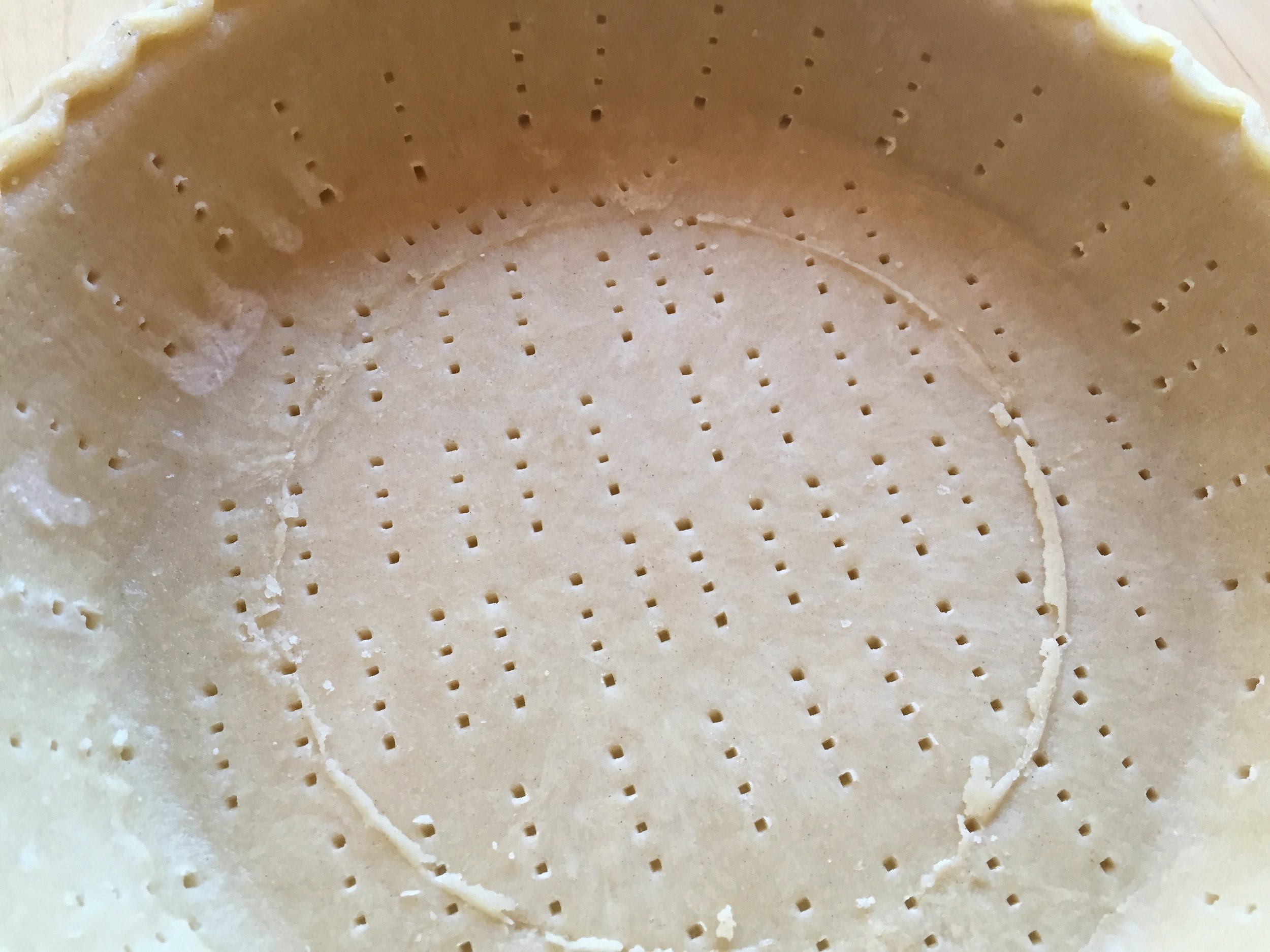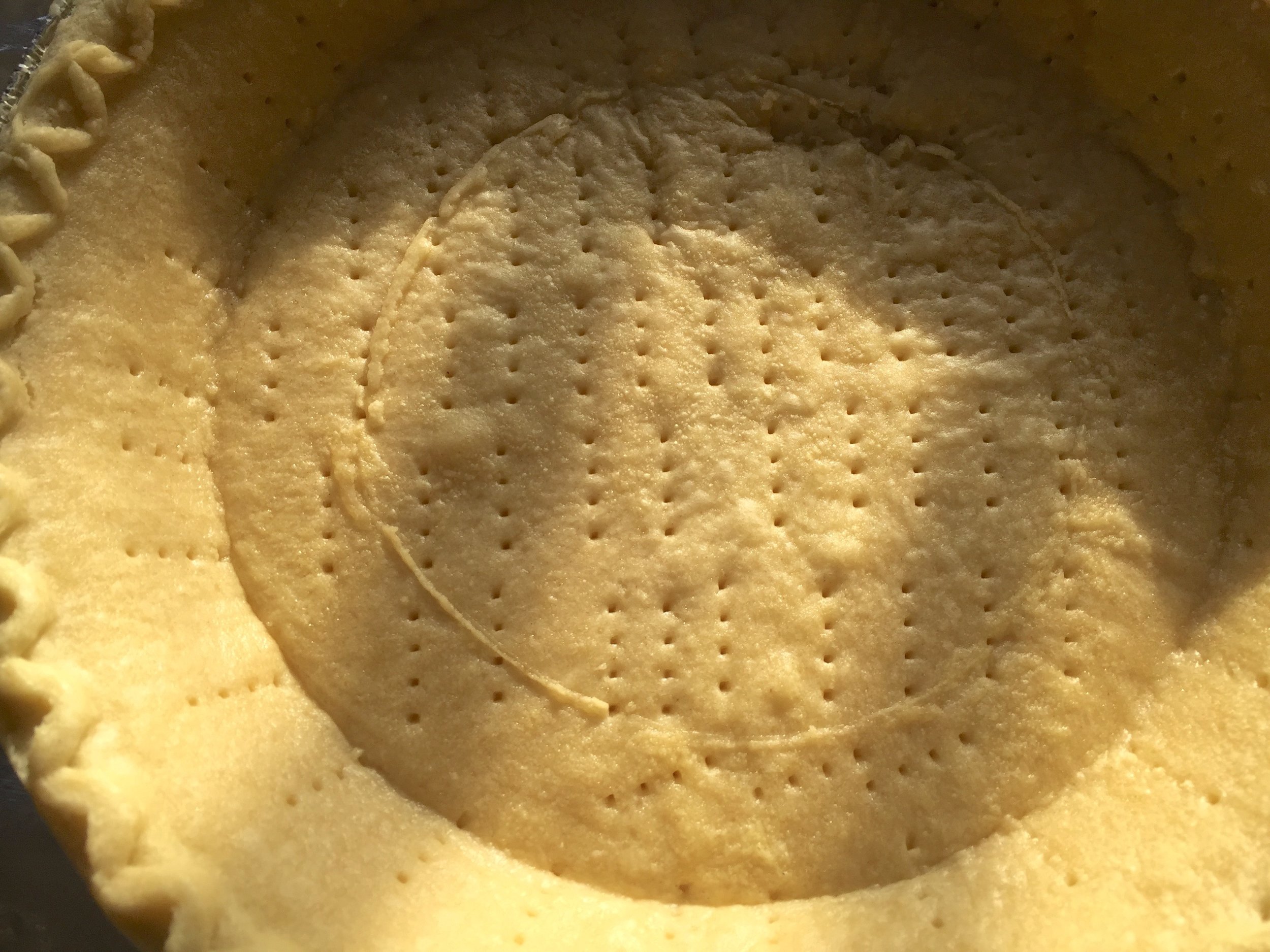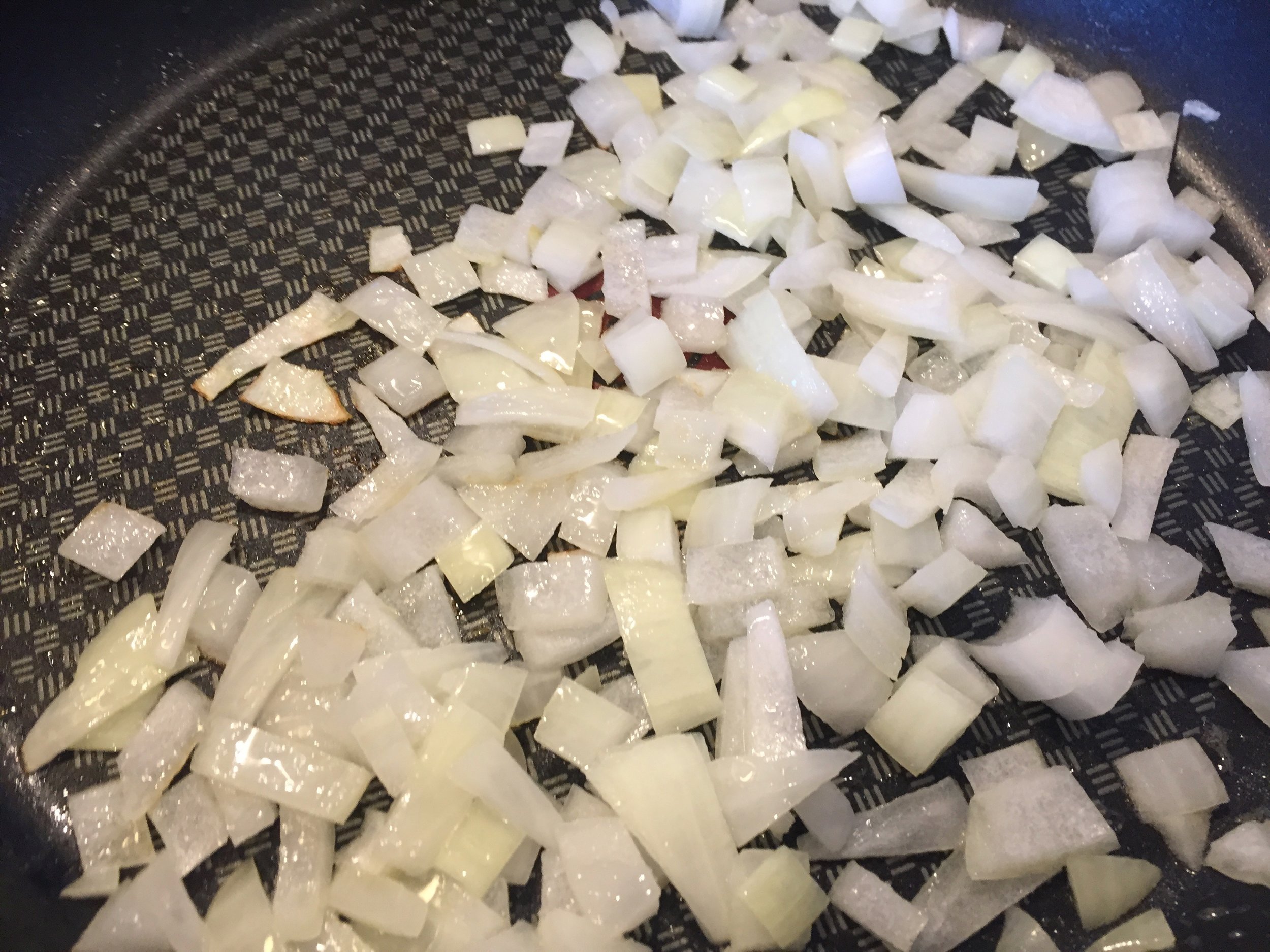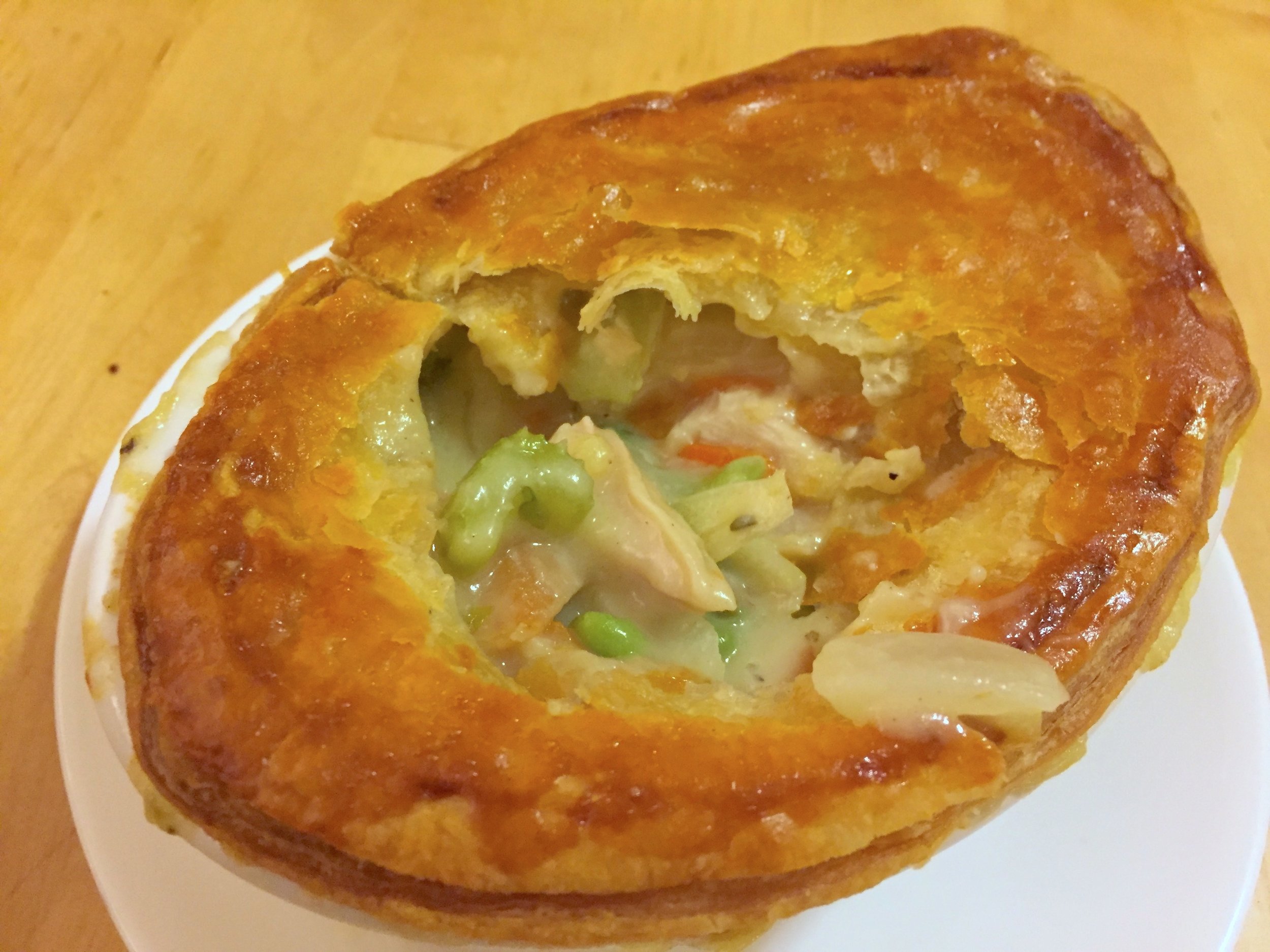Quiche Florentine

One of the most popular types of quiche, quiche Florentine was developed in France in the 19th century (for more on the history of quiche, visit the post on quiche Lorraine). So how did this French dish come to be named after Florence, an Italian city? History suggests that the term originated in the 16th century, during the reign of King Henry II of France. His wife, Queen Catherine de Medici, was a daughter of the powerful Medici family of the Republic of Florence.[1] She brought with her a taste for dishes served on a bed of spinach simmered in butter, a style which became known as “à la Florentine” in France.[2] Spinach, a native of modern-day Iran, had not been widely consumed previously in France, and “Florentine” soon came to refer to any application of the vegetable. Thus, a quiche with spinach as the primary ingredient became quiche Florentine.
Ingredients
1 pie crust (9”)
6 eggs
1 cup milk
1 cup gruyere cheese, grated
1 cup frozen spinach, thawed
1 onion, diced
1 tbsp butter
salt to taste
black pepper to taste
We will be using a nine-inch pie or tart crust for this recipe, either store-bought or homemade. It is important to blind bake the crust of a quiche, to ensure that the dough cooks properly. If we fail to blind bake, the egg will soak into the crust before it is fully cooked, preventing it from crisping as effectively. Preheat the oven to 425° F, and dock the crust with a fork, to help prevent bubbles from forming during the blind bake. If you have baking weights, use them here, though with sufficient docking weights are not absolutely necessary. Once the oven is up to temperature, bake until the dough is no longer raw, about 5-10 minutes. Remove the blind baked pastry from the oven and reduce the temperature to 375° F.
Meanwhile, let us prepare the filling. Melt the butter in a skillet over medium heat and add the diced onion. Season with salt and pepper, and cook for about 5 minutes.
The death of many quiche Florentines is the spinach, as it contains a great deal of moisture, which can prevent the custard from setting properly. Our job is to get rid of as much of this moisture as possible before the spinach filling is placed into the pie. Starting with frozen spinach is actually beneficial in this recipe, as the ice crystals formed during the freezing process often damage cell walls, allowing more moisture to be squeezed out. Once your spinach is thawed, wring it out thoroughly with a cheesecloth or clean hands. Do this several times, until very little water comes out. Add the drained spinach to the skillet and cook, stirring.
Salting the spinach in the skillet will also help to accelerate the release of moisture. Continue cooking for another 10 minutes, until the onions are softened. The mixture should be dry at this point—no moisture should be visible on the bottom of the pan.
Because we want the eggs to set as a custard and not curdle, it is important that the other two components, the crust and the filling, have some time to cool before we assemble the pie. We can get away with warm, but not piping hot. While they are cooling, grate your cheese and prepare the egg mixture, beating six eggs with a cup of milk until homogeneous.
When it comes to assembly, I prefer to layer my ingredients in the pie rather than mixing them with the egg. Layering gives us much more control over the amount and distribution of ingredients. Place the empty pie crust on a sheet pan lined with tinfoil. The sheet pan will help avoid an oven cleanup in the event of a spill or leak. I like to do two layers each of cheese and filling, alternating between the gruyere and the spinach and onions. Resist the urge to pack the filling in—in order for the egg to set around the other ingredients and bind the quiche effectively, we want the filling at this stage to be rather loose.
Once the filling is assembled, it is time for the egg mixture. I prefer to use a ladle to do this, which gives me more control of the amount of egg going into the quiche, and where its flowing. Fill the pie until the egg comes to within half a cm or so of the edge of the crust. Depending on the size of your crust and the amount of filling you have, you may have a small amount of egg mixture left over. Don’t try to force the issue by overfilling the pie.
Bake the quiche on the lowest rack of your oven at 375° F. It is important to bake quiche on the lowest rack because in most ovens, the heat during baking comes from the heating element in the bottom of the unit. Placing the quiche as close as possible to this heat gives the crust a fighting chance of crisping before the egg soaks through.
Now comes the final challenge to quiche making—when to pull the pie from the oven. Egg custard has a very narrow window of proper doneness, when it is no longer raw and still silky in texture. The simplest way to test for doneness is to jiggle the pie slightly—if the egg at the edges is set but the center is still wobbly, it’s time to pull the quiche from the oven. This should take about 30 minutes, but cook time will vary depending on the size of your pie crust and your oven. Even out of the oven, the custard will continue to cook gently due to carryover heat, so the quiche needs to rest for at least 15 minutes (ideally closer to 30 minutes) before slicing.
Quiche can be served warm or at room temperature, and also refrigerates reasonably well. However, refrigerating quiche tends to have detrimental effects on the crispness of the pastry, as moisture inevitably moves in. To minimize these effects, reheat refrigerated quiche in the oven when possible.
Substitutions
Other vegetables can be substituted for spinach in this recipe, such as kale. Shallots or leeks can also be substituted for the onions, if you are looking for a more subtle flavor.
Most reasonably mild hard cheeses which melt well can be substituted for gruyere in this recipe. Swiss cheese is a good substitute, as is Colby cheese. Some less traditional alternatives include cheddar cheese (especially common in quiches made in the UK) and low-moisture mozzarella cheese. For a richer custard, you can substitute cream for milk.
[1] Unusually among the queens of Europe, Catherine was a (very wealthy) commoner. Following the early death of Henry II, Catherine exercised a great deal of power, effectively ruling France in the stead of her three sons (King Francis II, King Charles IX, and King Henry III), all of whom were underage and sickly. One of the most powerful women of 16th century Europe, Catherine had a reputation for ruthlessness against the enemies of the crown. Her reign coincided with the French Wars of Religion, one of the bloodiest wars in European history.
[2] This is also why poached eggs served on a bed of spinach are known as Eggs Florentine.
Recipe
Prep Time: 10 min Cook Time: 50 min Total Time: 1 hr
Difficulty: 2/5
Heat Sources: oven, 1 burner
Equipment: skillet, sheet pan
Servings: 6
Ingredients
1 pie crust (9”)
6 eggs
1 cup milk
1 cup gruyere cheese, grated
1 cup frozen spinach, thawed
1 onion, diced
1 tbsp butter
salt to taste
black pepper to taste
Instructions
1. Preheat the oven to 425° F and dock the pie crust with a fork. When the oven comes to temperature, blind bake the crust until no longer raw, 5-10 minutes. Remove the crust from the oven and let cool, and reset the oven to 375° F.
2. Meanwhile, melt the butter over medium heat in a skillet. Add the onions to the skillet, season with salt and pepper, and cook for about 5 minutes.
3. Thoroughly drain the spinach, and add it to the skillet. Cook over medium heat, stirring occasionally, until the onions have softened, about 10 more minutes.
4. Beat together the eggs and milk, and set aside.
5. Build the quiche by layering cheese and the spinach mixture in the pie crust. Ladle in the egg mixture until the crust is filled.
6. Bake at 375° F on the lowest rack of the oven until the custard is just set, about 30 minutes.
7. Let rest for at least 15 minutes before slicing and serving.























